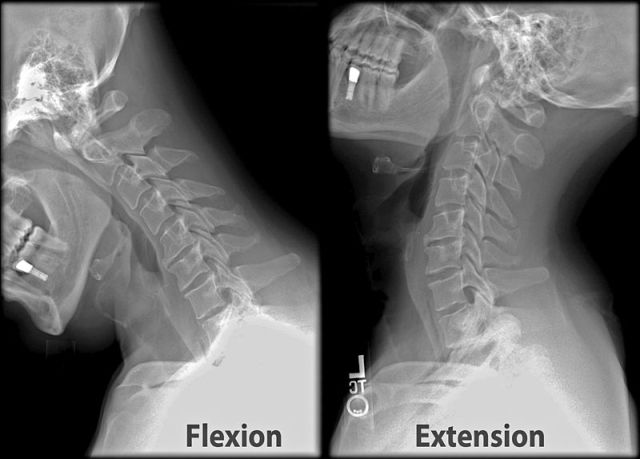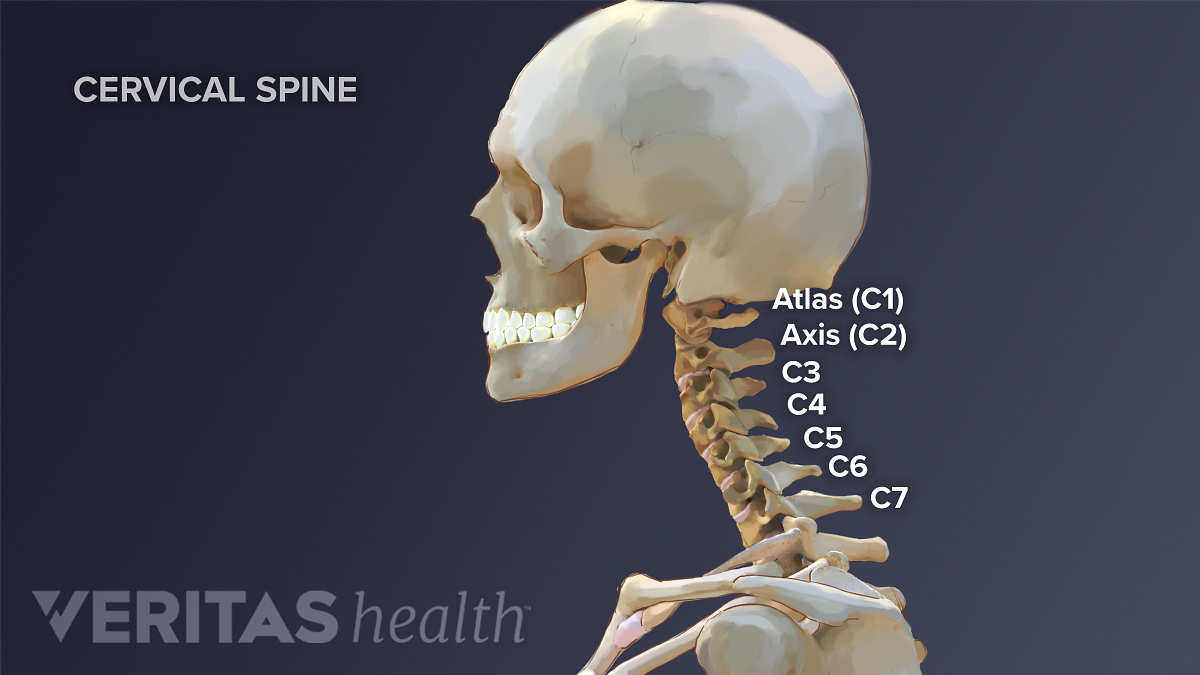Gliding synovial joint movement. Alar ligament Transverse ligament Apical ligament Tectorial membrane.

Range Of Motion Of Cervical Spine Bone And Spine
11 What is the AO joint.

. 2 pts Describe the range. During flexion the facet of the atlas glides anterior and rolls posterior in relation to. This joint forms a pivot motion.
The normal ranges of rotation of C1 on C2 are reported to be 50 to each side. C1 and C2 vertebrae. What is the smallest range of motion at C12.
The C1-C2 vertebrae and spinal segment include the following structures. Click to see full answer. Permits wider range of motion than any other joint type.
When you turn backwards rapidly to open a door or when a dancer pivots on one foot these are the motions a pivot allows. This is important to consider especially in patients where imaging for some reason has been carried out with the patients head rotated and there is low. Articulation between C1 and C2.
Range of motion ROMof the cervical spine ROM between C2 and C7 was 379112. Passive range of motion can be defined as the range of motion that is achieved when an outside force such as a therapist causes movement of a joint and is usually the maximum range. 50 of the rotation of the neck happens between C1 and C2.
What is the joint called. Solution for Describe the bonding between C1 and C2. Segmental ROM gradually increased from C2C3 to C5C6 and decreased from C5C6 to C6C7.
Range of motion is the capability of a joint to go through its complete spectrum of movements. Intervertebral discs are found between two typical vertebral bodies. Together they form the atlantoaxial jointatlantoaxial jointThe atlanto-axial joint is a joint in the upper part of the neck between the first and second cervical vertebrae.
C1 serves as a ring or washer that the skull rests upon and articulates in a pivot joint with the dens or odontoid process of C2. There is no intervertebral disc between C1 and C2 Typical Cervical Vertebrae. This failed to demonstrate any pathology and the relation between C1 and C2 had been normalized.
What motion does it do yes vs no. What is the joint called. 3- Compare and contrast the organization of bones in the upper limb and the lower limb.
The neck is the most mobile portion of the spine remarkable for its seven fragile vertebrae supporting the 10- to 15-pound ball of the head. 2 pts Describe the range of motion between the skull and C1. Range of motion of a joint can be passive or active.
Articulation between C1 and C2. Arthrokinematically during left rotation the left facet of the atlas C1 glides posterior on the axis C2 the right facet of the atlas glides anterior. The C1 vertebra also called atlas is shaped like a ring.
Be specific as to type of. Studies vary but the average range is 0-25 degrees of total movement with more extension than flexion Oatis 2004. See answer 1 Best Answer.
Enter your answer here Check Answer B ix₂x² 2 pts Describe the range of motion between C1 and C2. What motion does it do yes vs no. The atlas and axis.
The Atlanto-axial joint C1-C2 The axis C2 is a completely different shape with a peg-like dens odontoid process which projects superiorly from the vertebral body. Flexionextension is the primary movement of the O-C1 joint. The C2 vertebra has an upward-facing long bony pr.
You should be telling me about 6 bonds. The geometry and orientation of the C0-C1 and C1-C2 articular processes appear to dictate the type and amount of motion available at the atlantoaxial joint. Limitations in range of motion may reflect stiffness from arthritis pain from trauma or muscle.
The dens forms a joint with the C1 vertebra and facilitates its turning motions thereby allowing the head to turn in different directions. The head and atlas C1 move together as one unit over the axis C2 resulting in turning of the head towards the left. Describe movements along the anterior- posterior plane.
Flexion and extension Axial rotation Lateral flexion Lateral flexion Which ligament is primarily responsible for limiting excessive anterior translation linear motion of C1 on C2 and therefore protecting the spinal cord from injury. 2- Describe the range of motion between the skull and C1. 1- Explain how you would determine the side of the femur using the head of the femur patellar surface and condyles.
The experiment demonstrates the great range of movement at this level of the cervical spine. This problem has been solved. The C1 vertebra also called atlas is shaped like a ring.
Simultaneously the atlas pivots around the dens which is held within its osteoligamentous ring. The primary movement here is rotation. The C2 vertebra has an upward-facing long bony process called the dens.
Approximately 50 of flexion extension of the neck happens between the occiput and C1. Enter your answer here. Together they form the atlantoaxial joint which is a pivot jointThe C1 and C2 vertebrae are the first two vertebrae at the top of the cervical spine.
Similarly you may ask what is the function of. Located at the ends of long bones. Flexion and extension occur primarily between the skull and C1 the atlas rotation at C1-C2 the axis and lateral bending at C2-C7.
Include the names of bones in the upper limb and the.

The Movement Of C1 C2 Segment When The Head Rotated To The Right Side Download Scientific Diagram



0 Comments